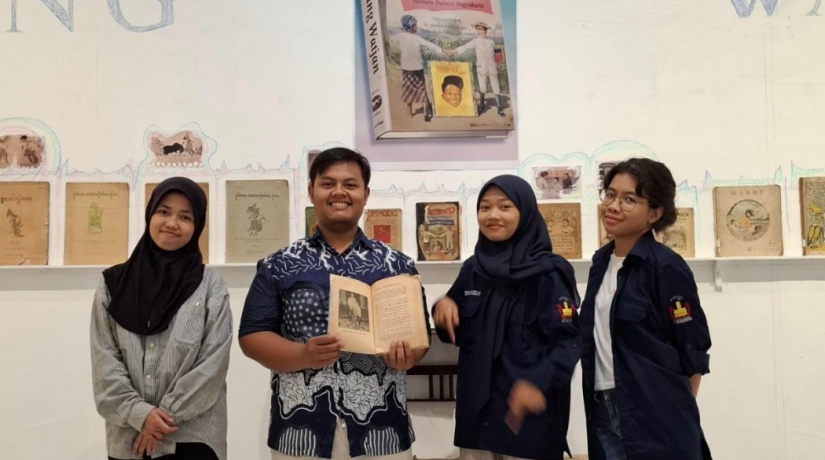
Yogyakarta, 30/4/2025 – As part of the assignment for the Javanese Literature Treasury course taught by Mrs. Dra. Wiwien Widyawati Rahayu, M.A., Javanese Language, Literature, and Culture students from the class of 2024 visited the Lajang Watjan (re: Layang Wacan) exhibition located at Bentara Budaya Yogyakarta. This assignment began with a group assignment. The groups that were formed departed individually, because there were still 2 days left of the exhibition, namely the 18th and 19th.
In the exhibition, what students observed were various books and manuscripts. After observing, students chose one material object to reveal its contents. One of them is Babad Pagedongan. In addition to revealing the contents of the book or manuscript, there was also a 1-minute short video assignment as proof that students had visited the exhibition. In addition to books, there were old manuscripts displayed on the walls and could not be touched because of their age. However, there were still many new manuscripts placed on the exhibition table and could be read.
“It’s actually interesting, the nuance is vintage and ancient but unfortunately not all of them can be opened,” concluded David Sofyan, one of the students who visited the exhibition. The books or manuscripts that caught his attention the most were those that discussed primbon, some of these manuscripts were even in Javanese script.
David was interested in manuscripts or books that discussed primbon because in his hometown, the use of primbon is still very closely related to all aspects of the community’s life. Examples of activities that still use primbon to calculate good and bad days are weddings, agriculture, and other events. This can then be studied and compared with modern sciences in today’s era. For example, is the relationship between good and bad days for agriculture in primbon still relevant to the science studied by our friends in the faculty of agriculture. The next question that can be asked is whether Javanese society with its titen science can still be implemented in today’s era, and whether it is linear or in line with the science discovered by modern foreign scientists.
David said that the exhibition was fun, like a vacation because he went around looking at ancient manuscripts, and the nuances were very supportive in terms of arrangement and lighting. “It’s like stepping back in time to when these manuscripts were written,” he said.
[Public Relation of Javanese Literature, Haryo Untoro]

